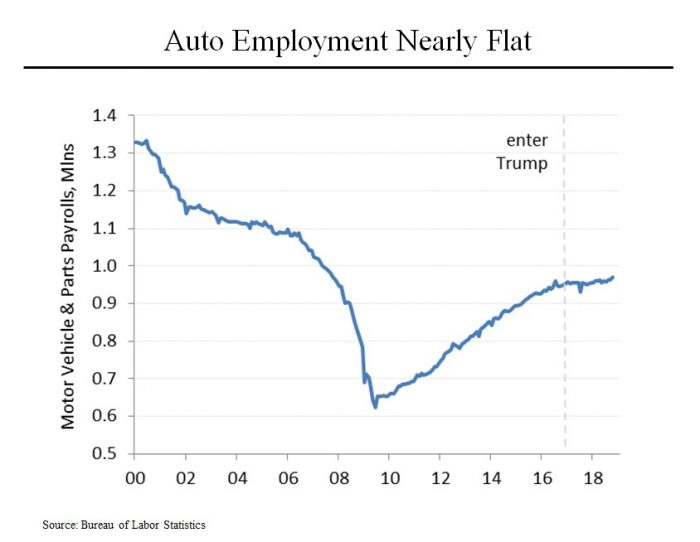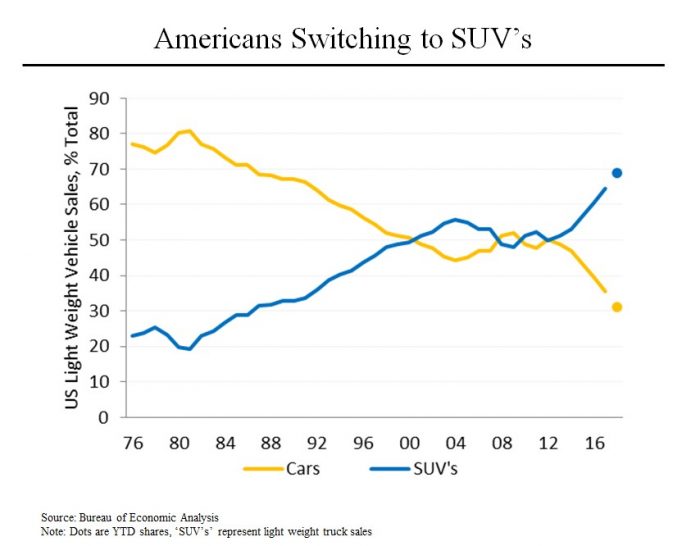On MSNBC’s Morning Joe today, Steven Rattner provided some context surrounding General Motors decision to lay off workers – contrary to what Trump would have you believe, trade isn’t the primary culprit.
President Trump would like the American public to believe that the recent layoffs by General Motors were driven principally by foreign import competition, particularly from China. The reality is quite different.
Perhaps surprisingly, the share of imported cars sold in the United States has fluctuated within a relatively small band for more than three decades. Equally surprising may be the fact that the vast bulk of our foreign cars (and light trucks such as SUV’s) come from Mexico and to a lesser extent, from Canada. Some cars still come from Japan and of course, many luxury cars are made in Germany. But what Mr. Trump obviously doesn’t know is that only a tiny number of cars are imported from China. So those G.M. plants in China that Mr. Trump says should be closed are actually producing cars for the domestic Chinese market, one of the brightest pieces of G.M.’s business.
High on the list of challenges that led to G.M.’s announcement was the change in car buying habits by Americans away from sedans and toward SUV’s, particularly crossovers. The problem for G.M. is that while they have a good line up of full size SUV’s, the company is weaker in the crossover category that many Americans prefer. The most popular models in that category include the Honda CRV and the Toyota RAV4. That’s why the assembly plants that G.M. is closing are those that make small cars and sedans.
G.M. is also closing engine and transmission plants. As the auto industry moves toward electric vehicles, transmissions are no longer needed and the types of engines required will change dramatically.
The G.M. layoffs illustrate another problem facing Mr. Trump: After recovering robustly after the 2009 rescue, growth in head counts in the auto industry has been flattening. That’s a reflection of tighter management by the companies as well as overall sales that may be peaking. Adding to the mix is the increase in ride sharing and the decline in miles driven by the average American. All told, it’s not a dismal picture but hardly the opportunity for growth that Mr. Trump seems to think is available.







